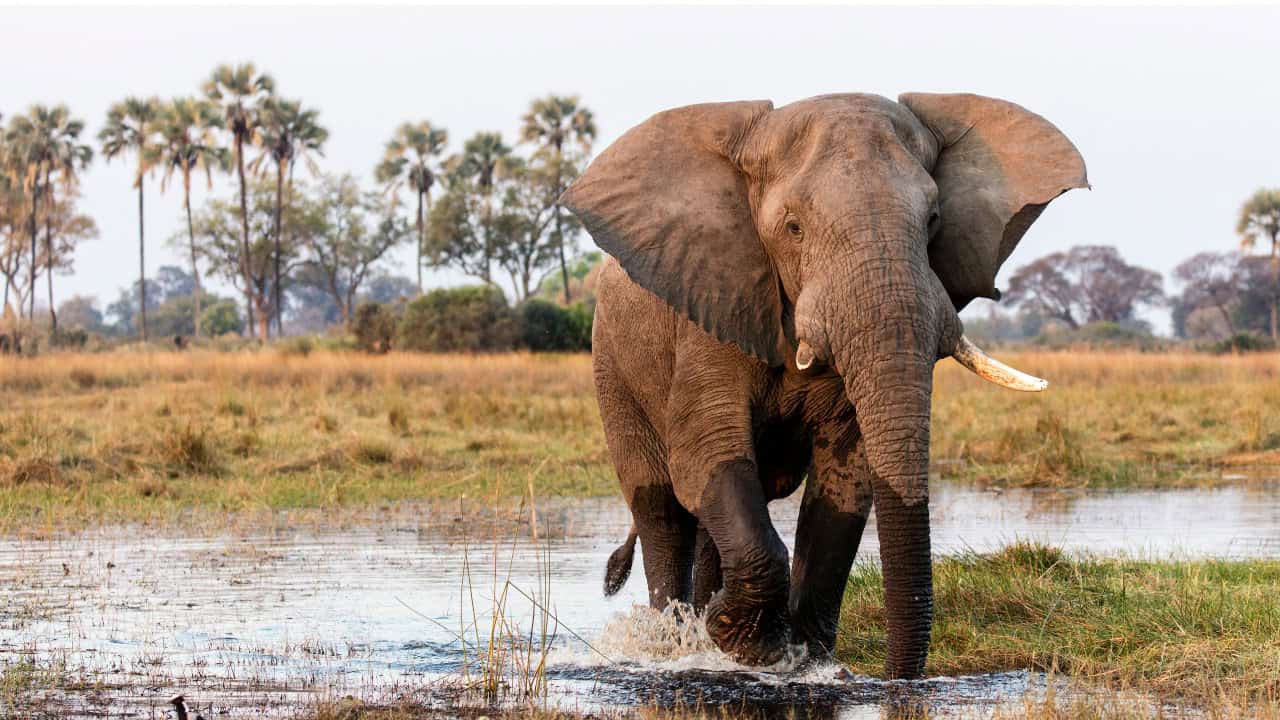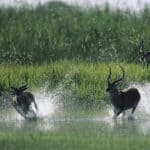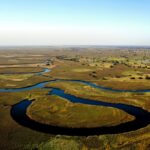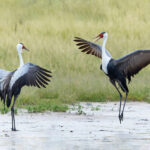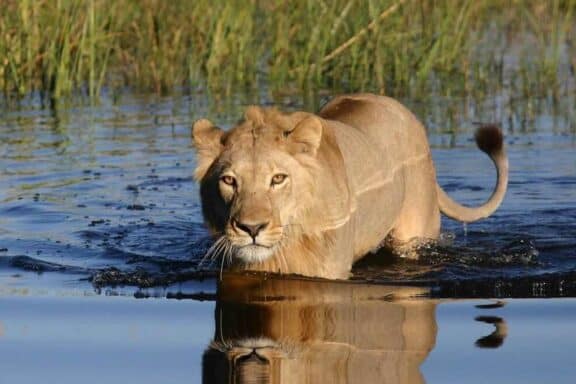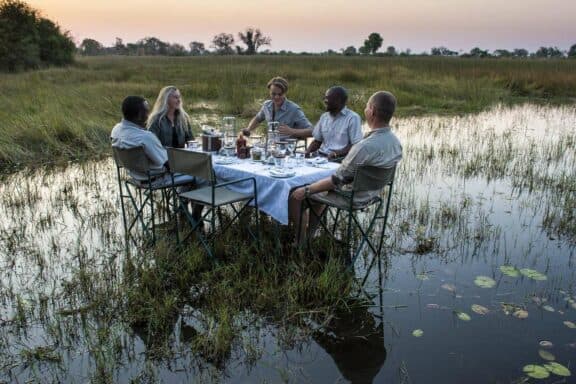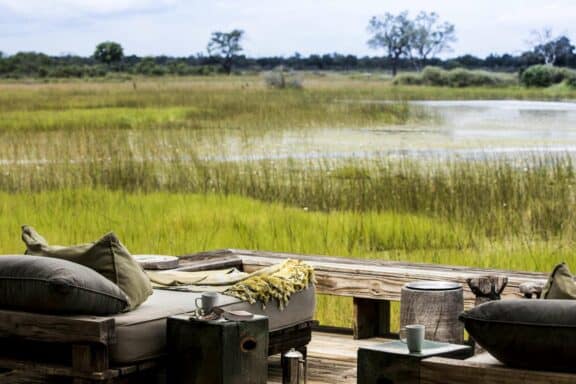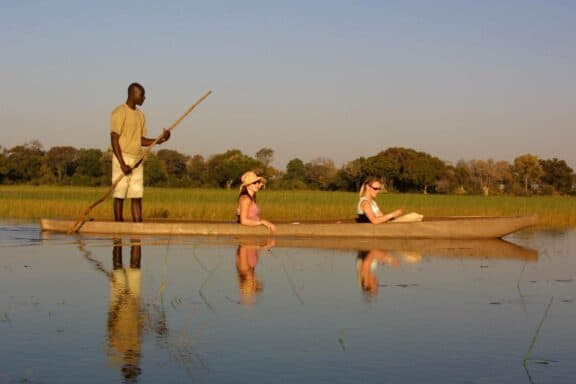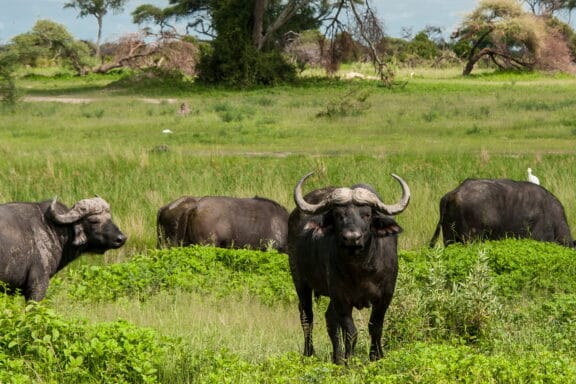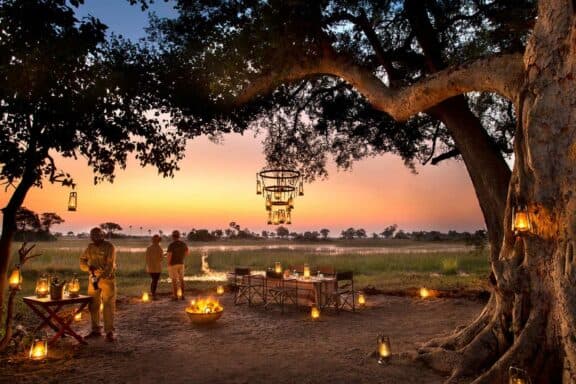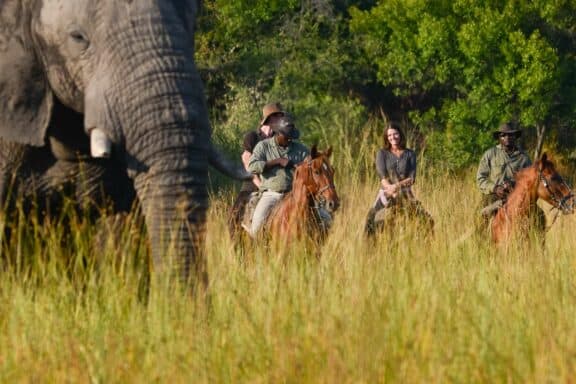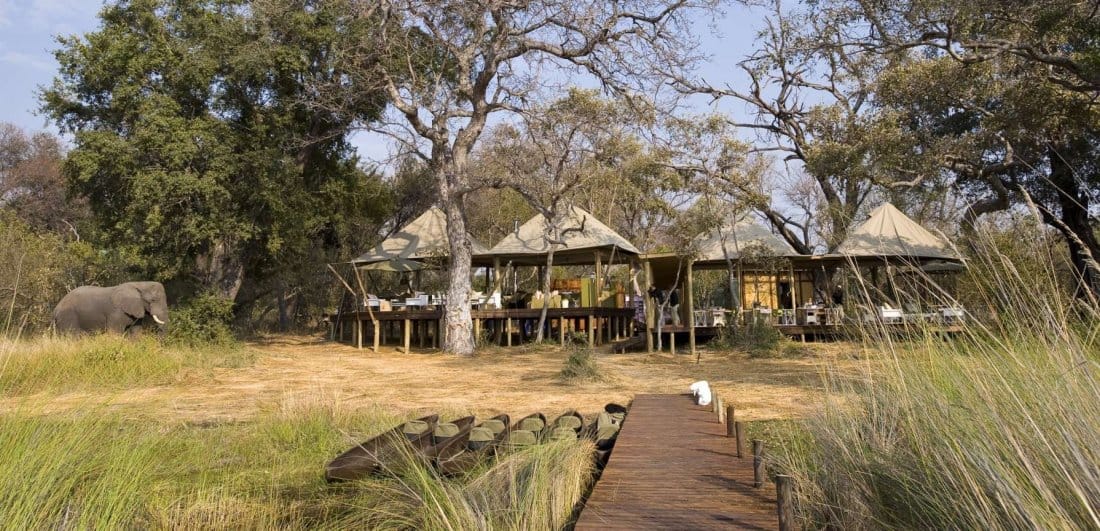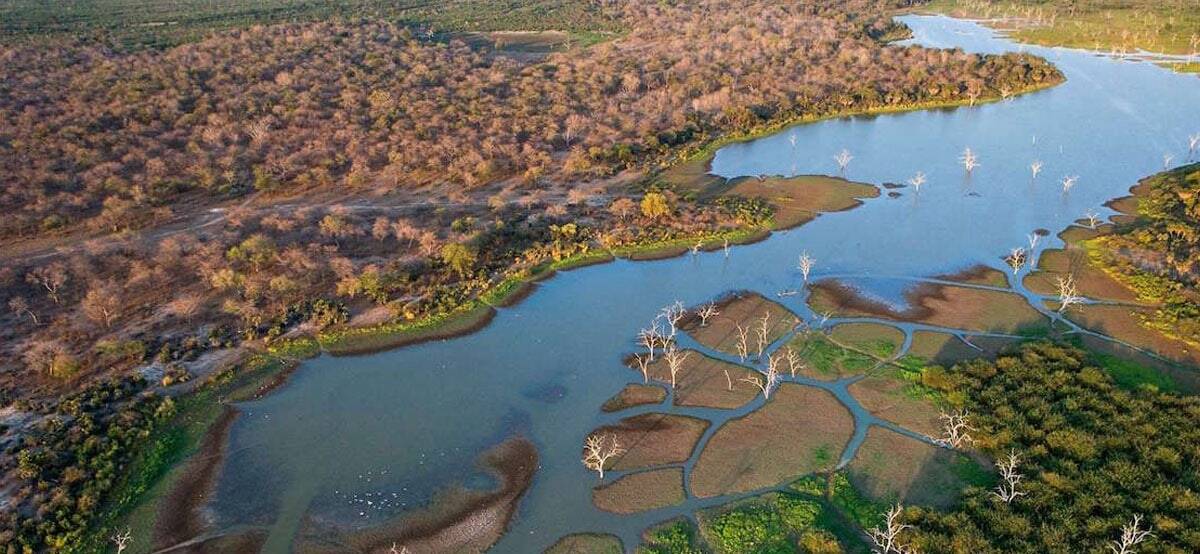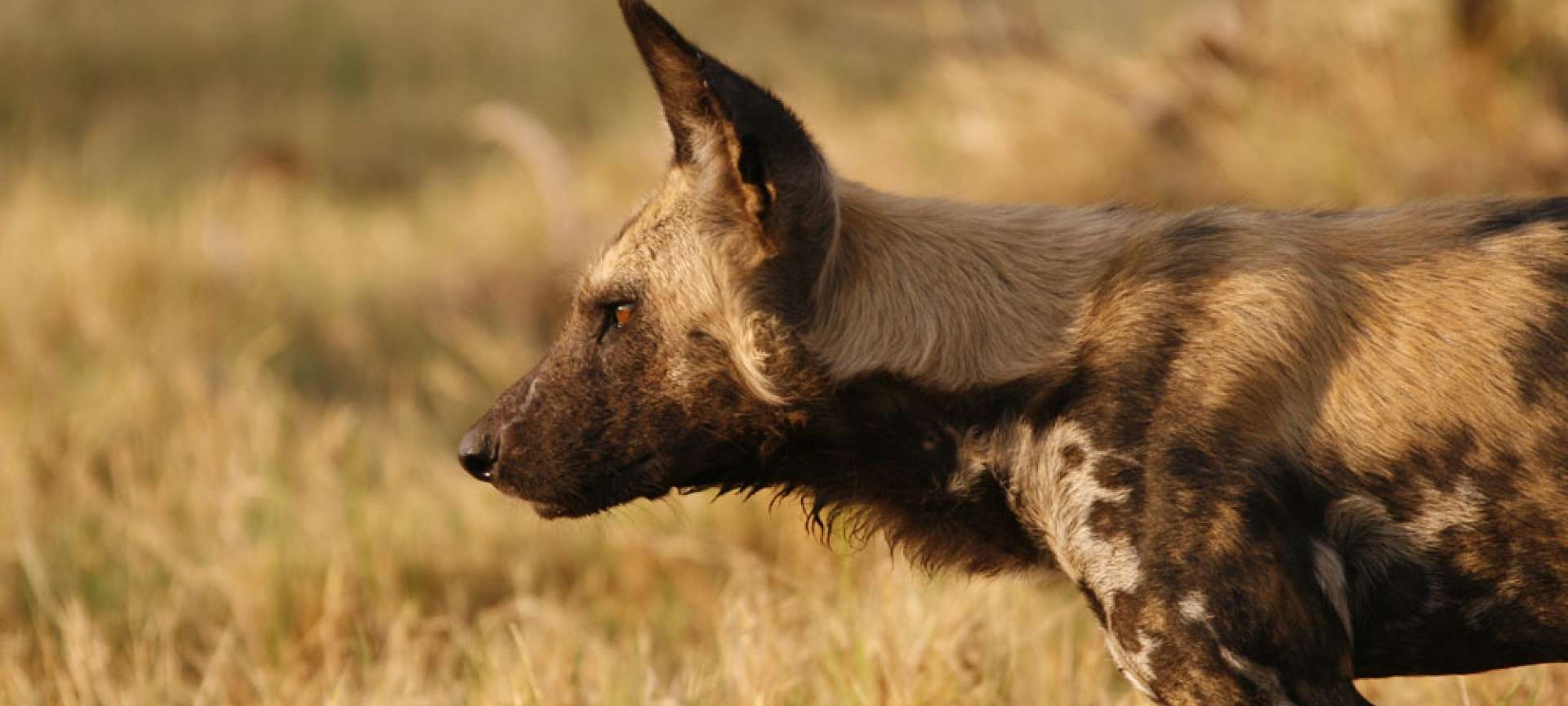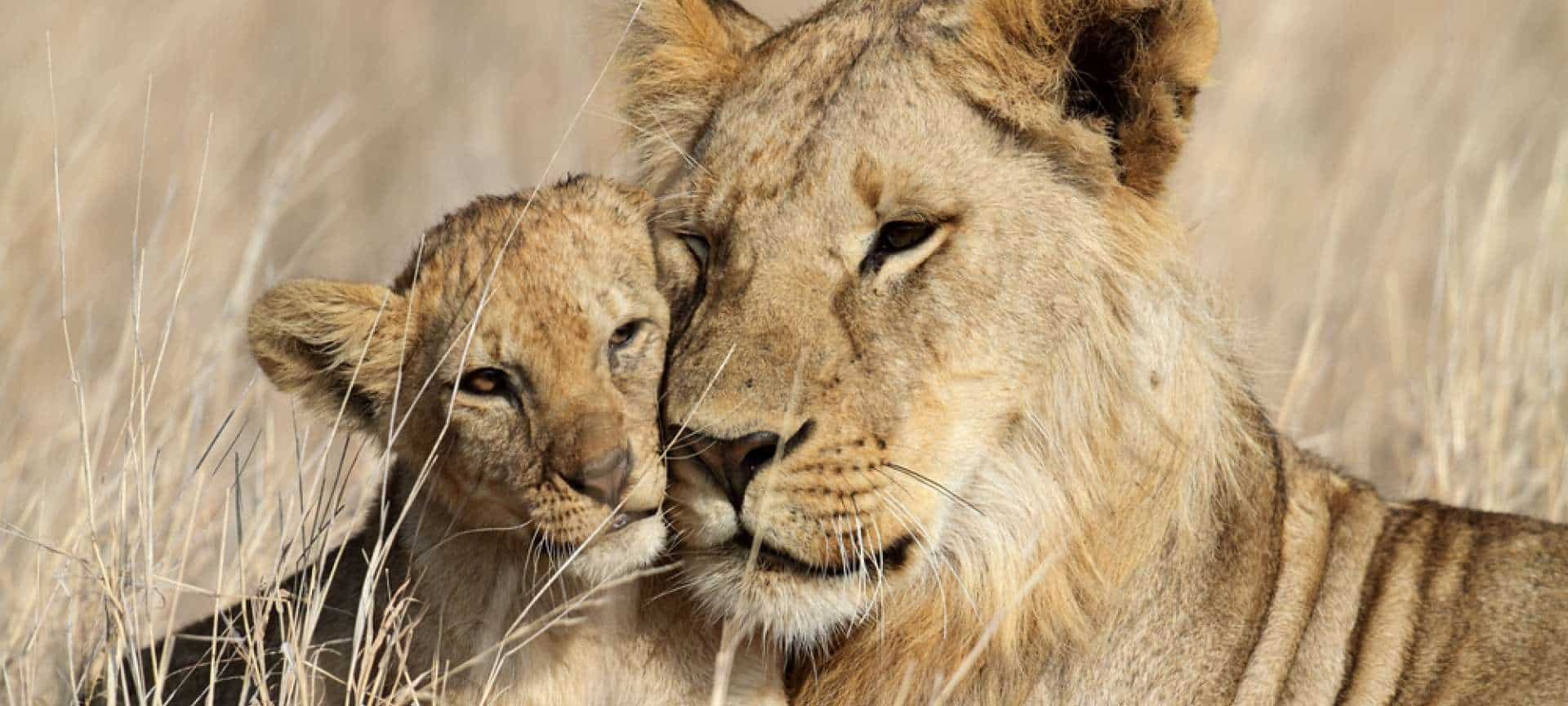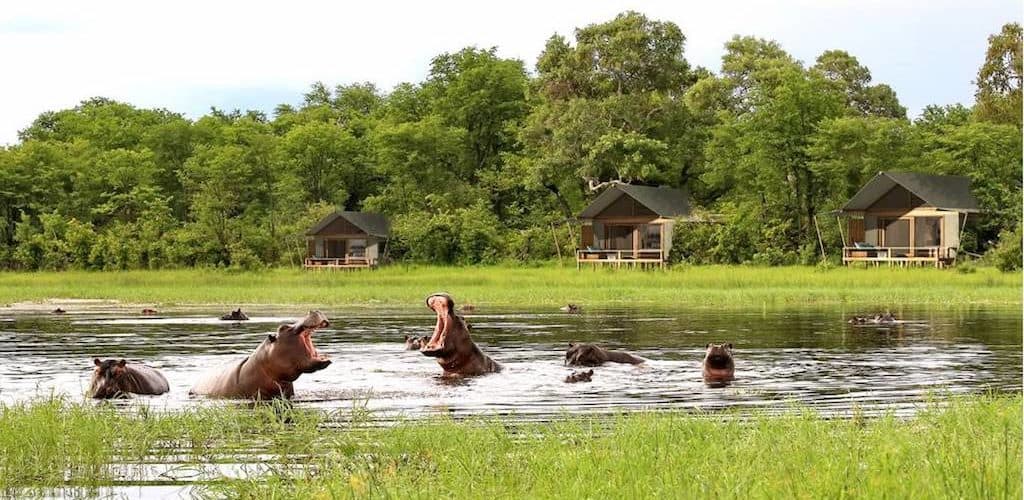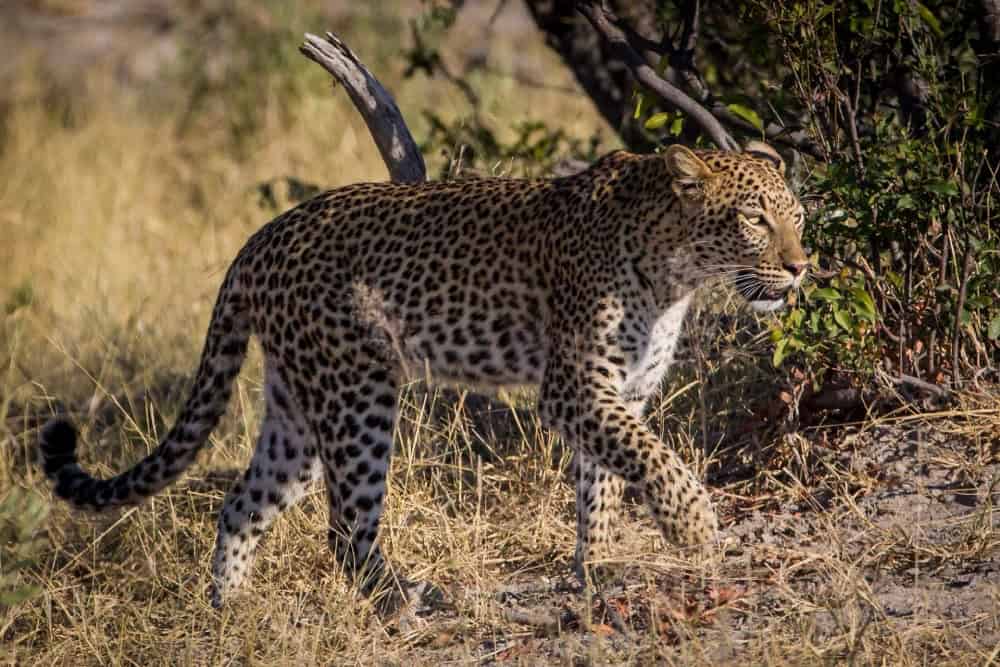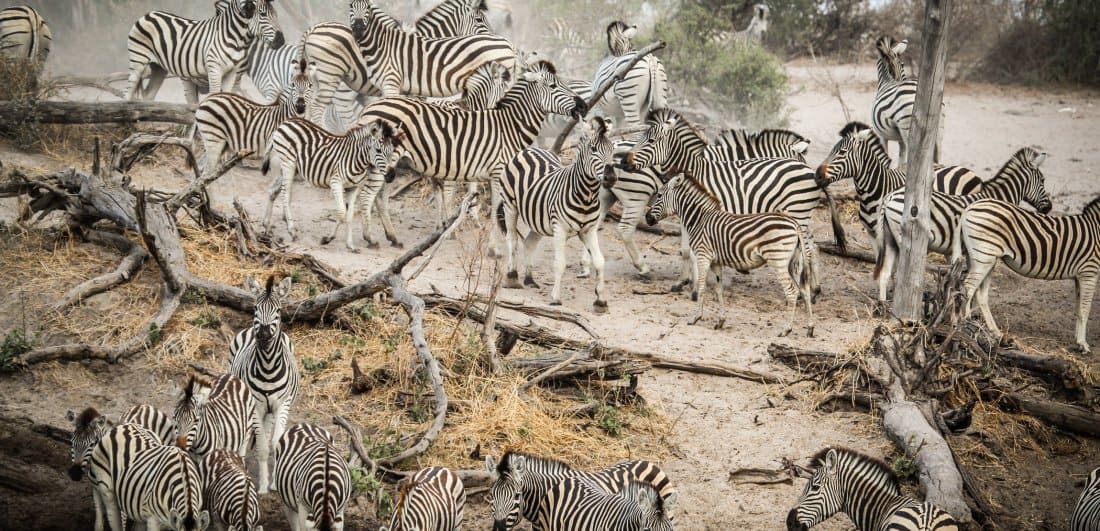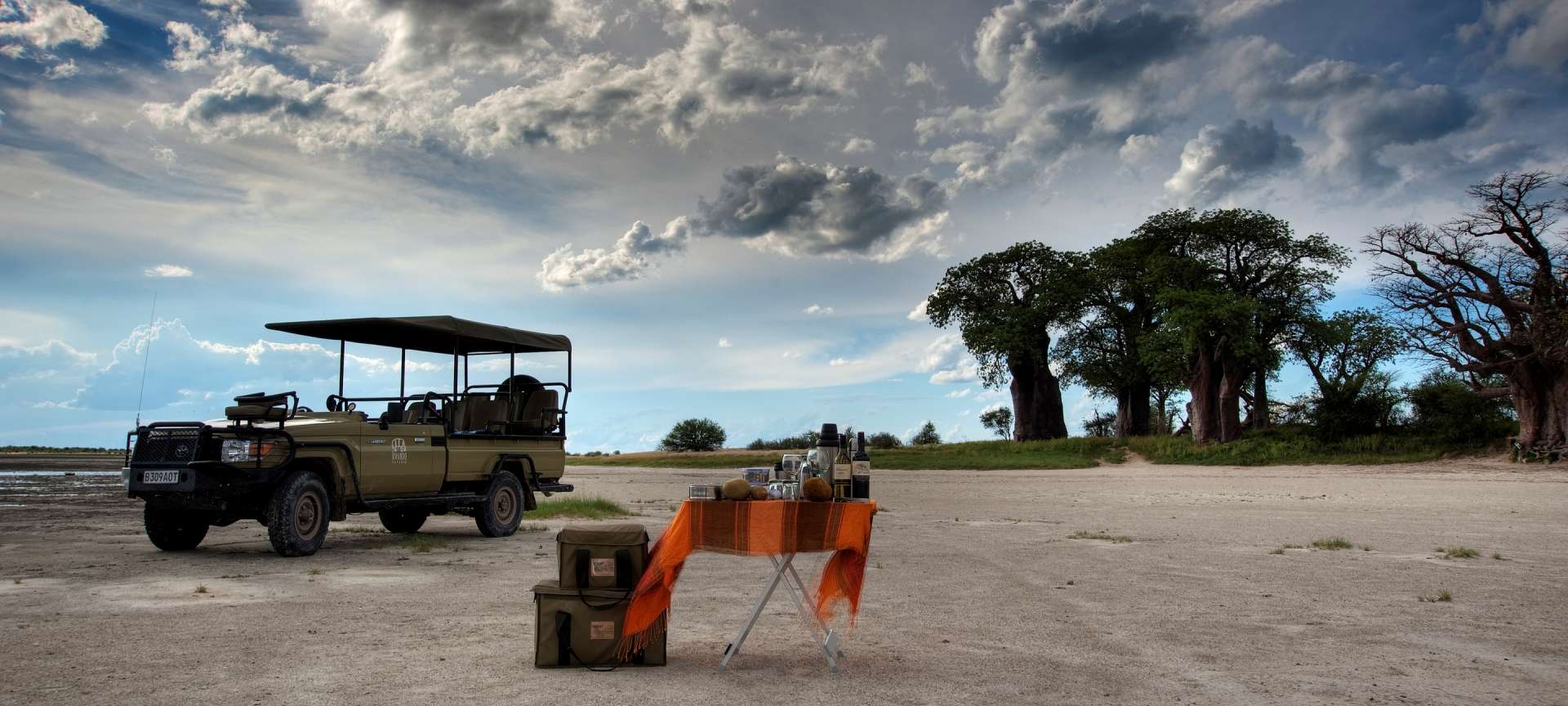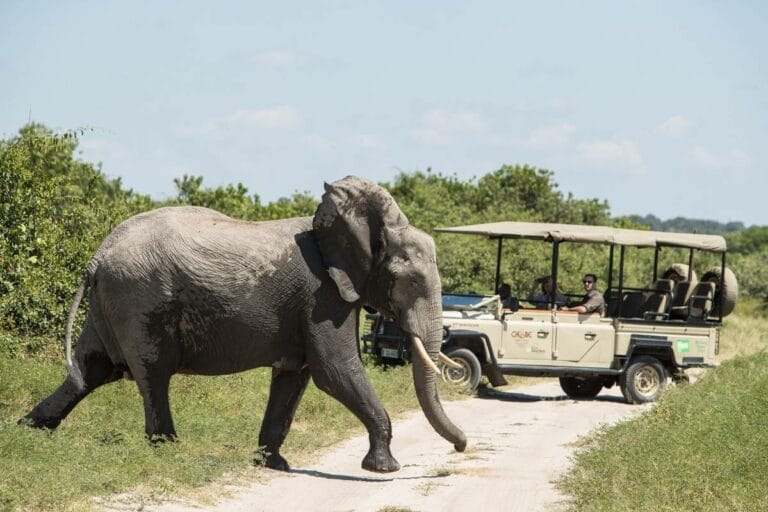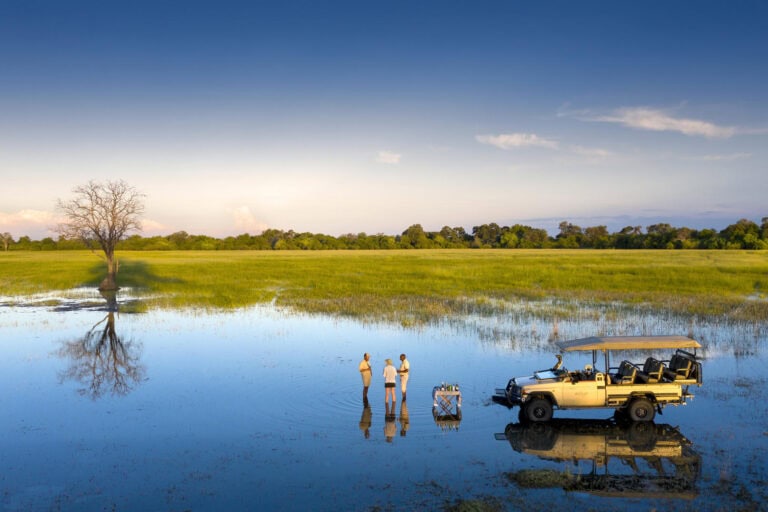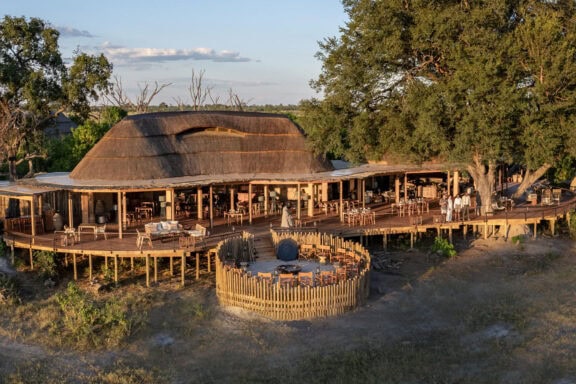Welcome to the Okavango Delta, one of Mother Nature’s most precious creations. On an Okavango Delta safari, in a vast, ephemeral wetland, the water moves gently beneath your mokoro, parting like silk as you glide through a labyrinth of lily-covered channels. It’s truly a miracle of nature and a place where the desert surrenders to a lush oasis, creating a unique safari experience.
The air is thick with the calls of kingfishers, the distant grunts of hippos, and the soft splash of lechwe wading through the reeds. Lions rule over their saturated world, braving crocodile-infested waters to reach their prey. Nearby, leopards stalk the riverbanks, eluding all but the keenest of eyes.
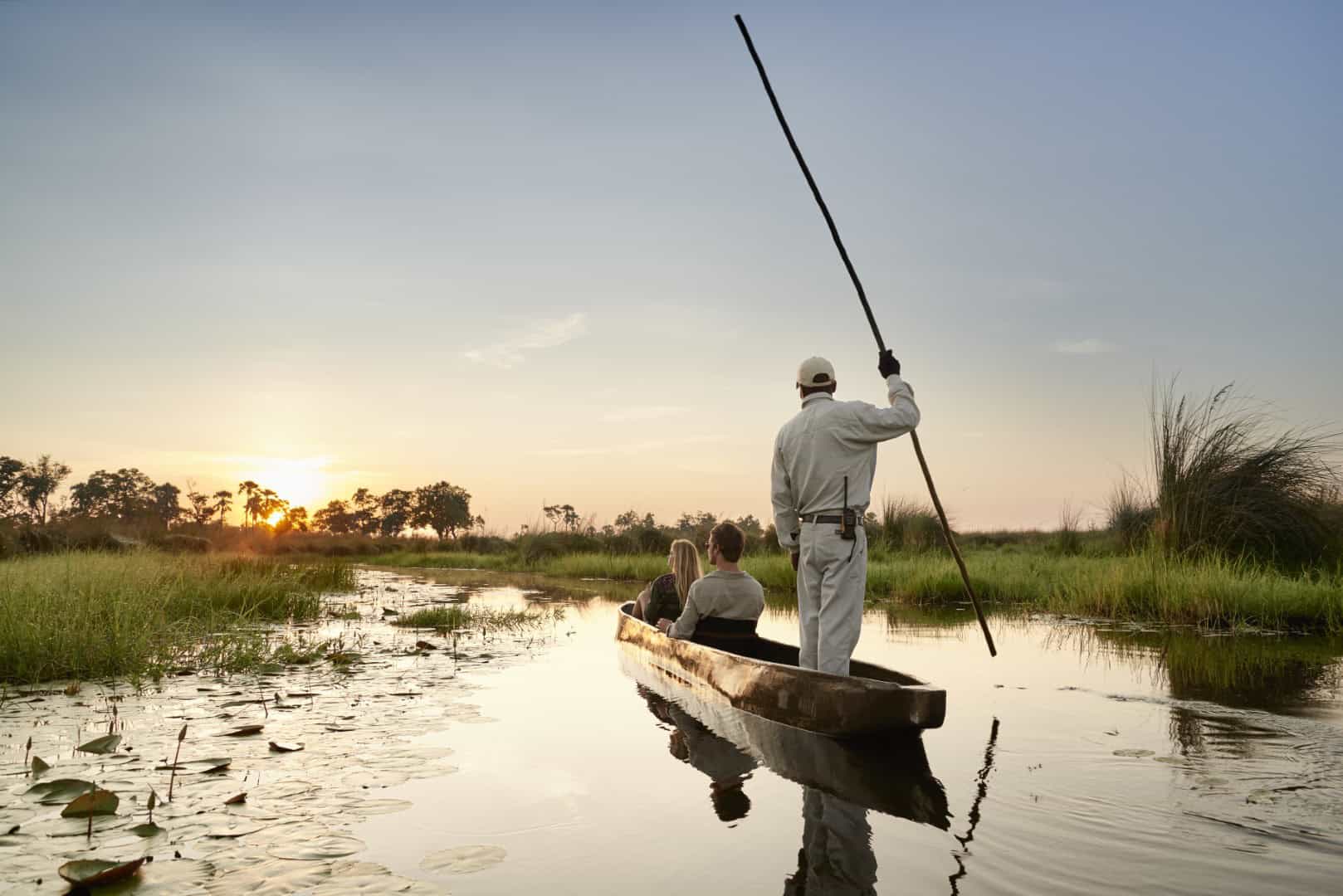
During a Botswana Okavango Delta safari, time slows and the wilderness embraces you fully. Whether you’re drifting silently through the waterways, tracking lions on foot, or watching a herd of elephants cross the floodplains in the golden light of dusk, the Okavango Delta is an experience that stays with you long after you’ve left.
An Okavango Delta wildlife safari reveals nature in perfect balance. Each day brings a new rhythm: the hush of the dawn, the low rumble of lions in the distance, and the thrill of watching leopards melt into the shadows.
At Discover Africa, we know this region intimately. Our Okavango Delta safari packages are crafted by experts who’ve paddled its waters, tracked its predators, and handpicked the finest lodges for comfort, style, and sustainability.
Where to Stay

Stay in some of Africa’s most exclusive Okavango Delta safari lodges. Botswana safari camps in the Okavango Delta include canvas-tented elegance and private plunge pools overlooking floodplains.
Each luxury Okavango Delta safari lodge blends comfort with authenticity. Evenings bring lantern-lit dinners, fine wines, and the unmistakable call of the nightjar.
Okavango Delta Safari Packages
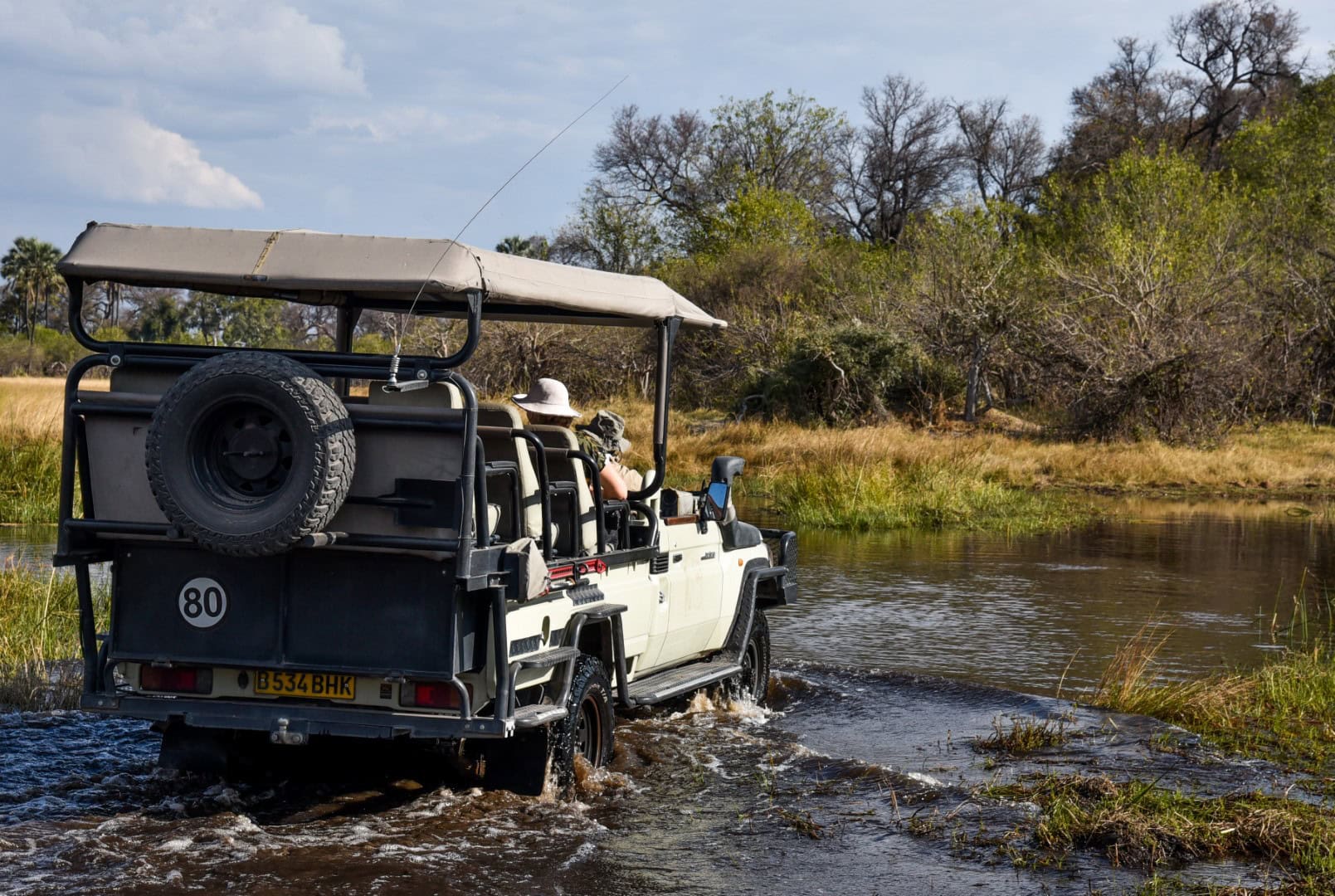
Our curated Okavango Delta safari tours are designed to match your pace and passion. Whether you’re after an intimate Okavango Delta photo safari, a family-friendly exploration, or a romantic retreat deep in the wetlands, every journey is fully customisable.
- Classic Delta Discovery: Combine a safari in the Okavango Delta with an experience in Moremi Game Reserve for diverse game viewing.
- Ultimate Water Wilderness: Focus on the Delta’s waterways with guided mokoro trips and sunset cruises.
- Photographer’s Safari: Timed for peak light and animal activity, a photo safari is ideal for capturing that perfect shot.
- Delta and Desert: Pair the Delta’s lush landscapes with the stark beauty of the Makgadikgadi Pans for contrast and variety.
- The Delta on Horseback: Explore the heart of the Okavango while in the saddle, reaching untouched corners of this enchanting wilderness during an Okavango Delta horse safari.
When to Go
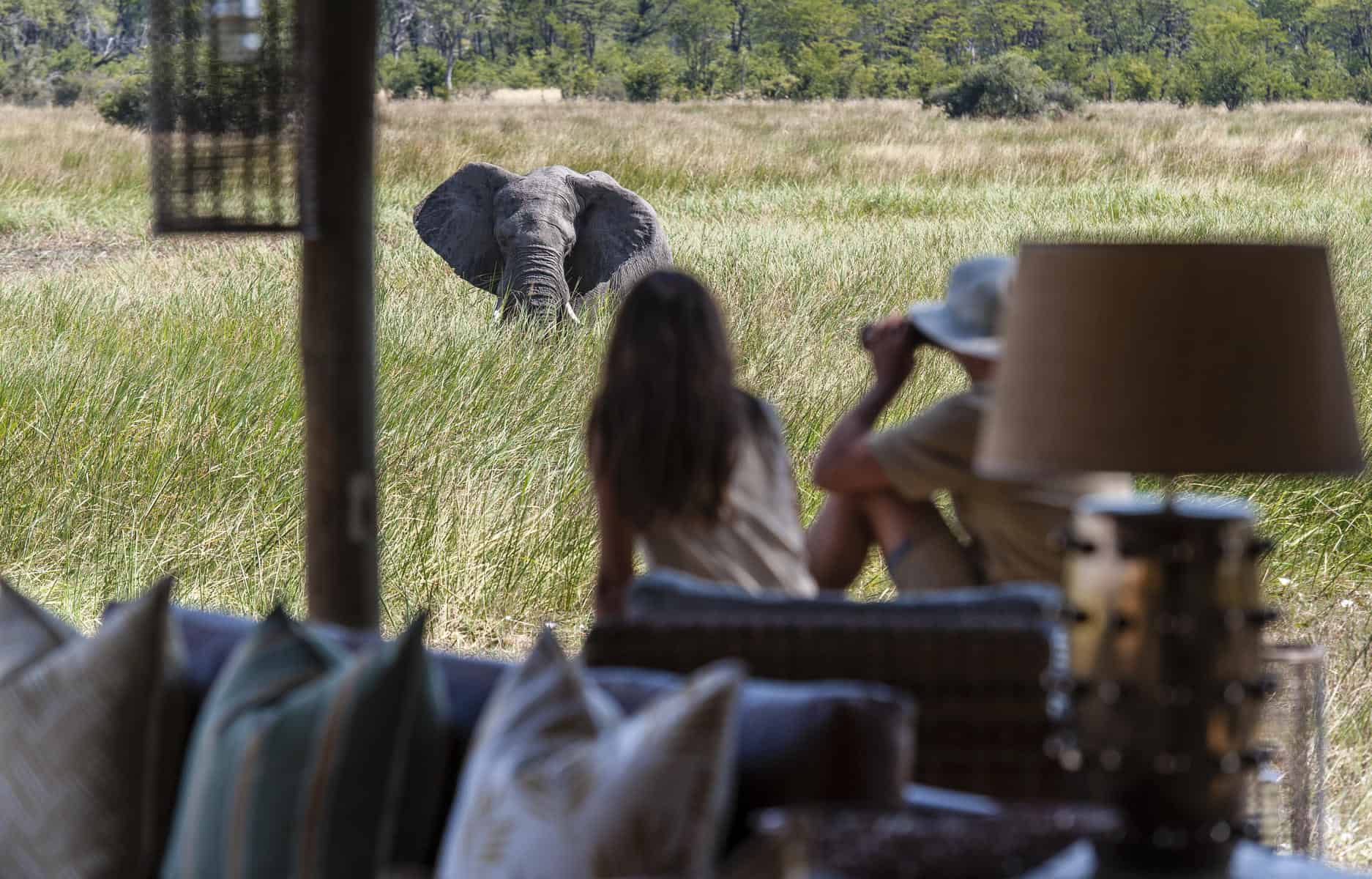
To really experience the Okavango Delta at its best, time your trip during the dry season, between April and October, with peak water levels occurring in July and August. Higher water levels mean opportunities for mokoro safaris, a must-do activity to explore the channels and get closer to the smaller residents of the Okavango.
Planning Your Okavango Delta Safari
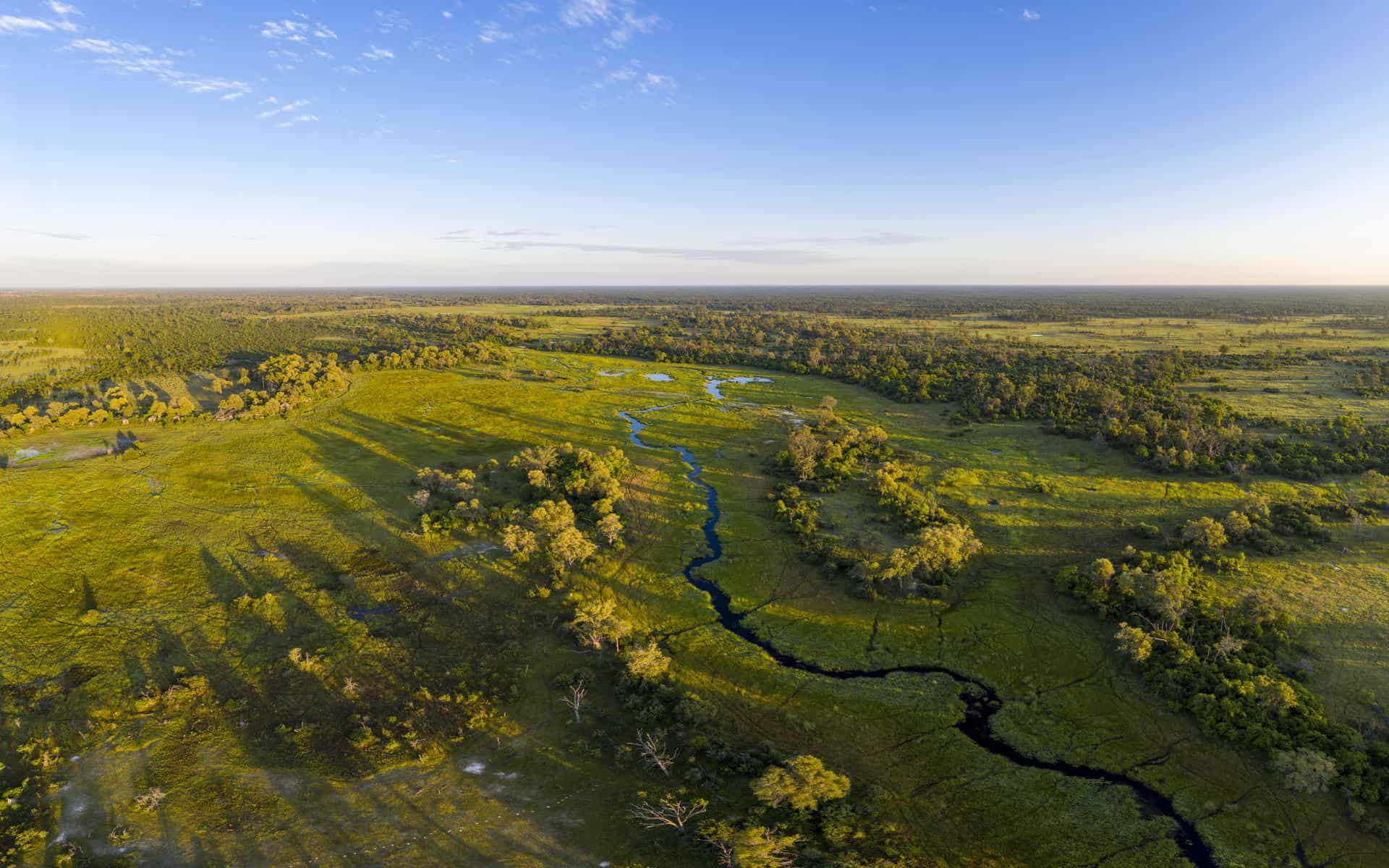
Inspired by this place? Let’s start designing your African chapter.
Every traveller’s dream is unique. Browse our tours, or let our team build an itinerary that sounds like you, balancing adventure with relaxation, from choosing the best Okavango Delta safari lodge to understanding Okavango Delta safari costs.









